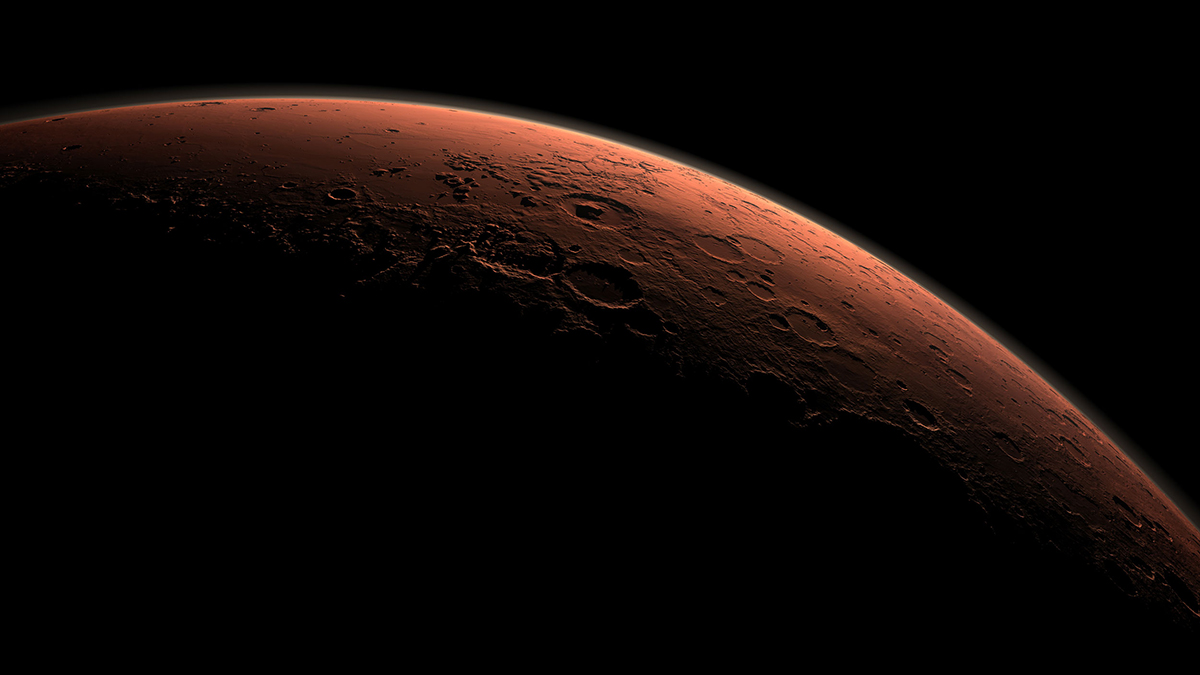The flurry of media and social media interest that greeted news of the landing of the Perseverance rover (and, incidentally, Ingenuity, the first helicopter on Mars) shows the enduring fascination that the Red Planet exercises over the popular imagination.
The endless fascination with Mars seems strangely contrary to that of the Moon. After the peak of excitement of the first landing in 1969, public interest in the Apollo Moon program rapidly waned. Yet, despite a stream of orbiters, probes and rovers making the trip to Mars, we seem to remain enthralled with Mars.
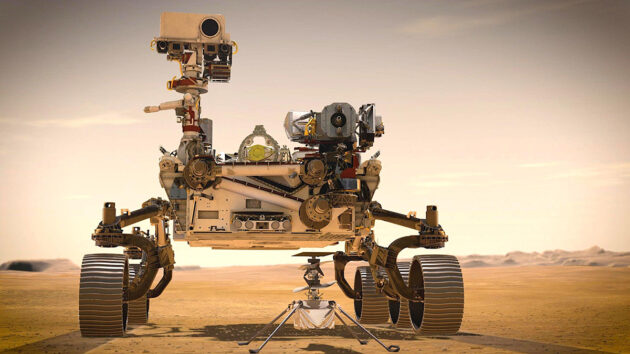
What makes Mars such an object of interest and fantasy? For more than a century, Mars has loomed large in the science fiction landscape. Even after astronomy and then the earliest probes demolished most of the fantastic visions, Mars continues excite our imaginations.
Certainly, Mars, hostile and barren as it is, is the most Earth-like of the other planets, but that wasn’t known until comparatively recently. Jupiter, Saturn, Venus are more prominent in the night sky, while the Moon outshines them all. Indeed, most off-Earth fantasies fixated on the Moon, beginning with the 2nd-century Greek “A True Story” (spoiler: it wasn’t).
Mars’ time arrived with the astronomical observations of Giovanni Schiapparelli in 1877. Schiapparelli described in great detail apparent linear formations he observed on Mars. He called them channels, “canali” in Italian. Schiapparelli did not claim that either the canali were artificial or carried water. But imperfectly translating “canali” as “canals” led English readers to put two and two together and make five. The idea that a Martian civilisation was building massive canals criss-crossing the planet became firmly fixed.
American astronomer Percival Lowell especially ran with the canal theory. Lowell argued in 1906 that that they were built by the inhabitants of Mars to transport water from the polar ice caps. In a magnificent feat of projection, Lowell claimed that the fact that the canals spanned the whole globe proved that the “eminently sagacious” Martians weren’t divided into warring nations, like us, but knew how to cooperate for the common good.
As was soon discovered, the canals were nothing more than an optical illusion. But still little was known about Mars for certain. In the meantime, Mars as the abode of an advanced civilisation had become firmly fixed.
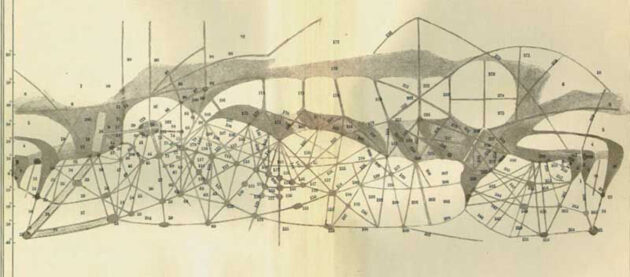
The burgeoning literary genre of science fiction and the new entertainment technology of film quickly gravitated to Mars and Martians.
“Invasion” literature was a common theme in late 19th century English popular fiction, but it was H. G. Wells in 1898 who changed the invaders from Germans or Anarchists to Martians, with The War of the Worlds. Wells’ Martians were certainly more monstrous than any picklehelmed Teuton, but Wells used his invaders to critique Imperialism. With invaders arriving from unimagined distances and armed with terrifyingly advanced weapons, Wells invited his readers to put themselves in the place of the colonised “savages”.
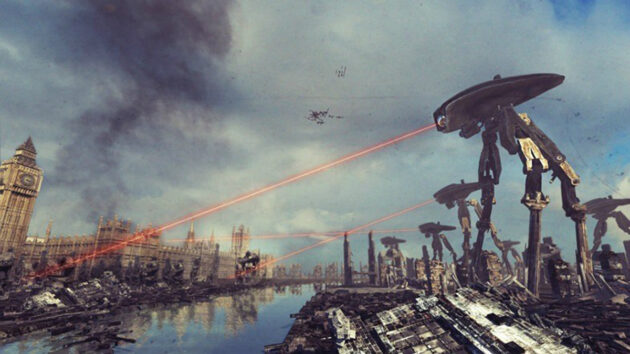
Ray Bradbury turned the tables again in the 1950s, with his Martian Chronicles, which imagined humans as the invaders in Mars. As had Wells half a century earlier, Bradbury used his Martian stories to critique the conquest of the Americas.
Other writers, though, exploited Mars as the stage-setting for purely escapist Romance. Edgar Rice Burroughs’ John Carter stories were a publishing sensation, as his protaganist swashbuckled through a best-selling series of adventures involving swords, (big) green men and scantily (in fact, un-) clad princesses.
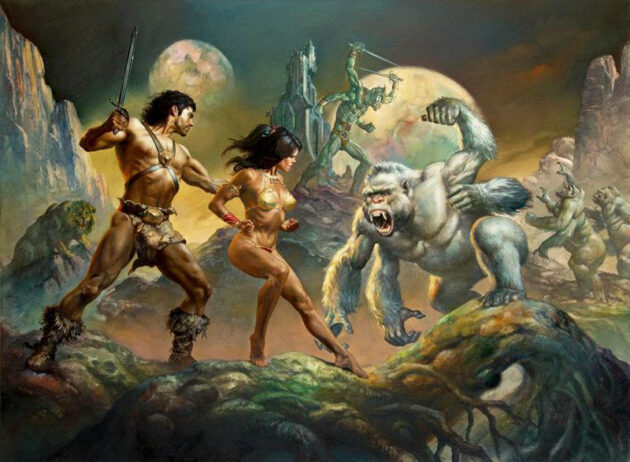
Cinema indulged the seemingly inexhaustible appetite for Mars stories, beginning with Thomas Edison’s 1910, A Trip to Mars. For the next 50 years, literary and cinematic heroes and villains travelled to and from the red planet.
But in 1965, the Mariner 4 probe made the first flyby of the planet. More probes followed and the bitter disappointment grew. Mars turned out to be dry, frigid, barren and altogether devoid of apparent life, let alone advanced civilisations. But, just because the canals were clearly imaginary, the Martian imagination didn’t dry up. Eager amateurs scanning the photos beamed back to Earth quickly imagined that they were seeing pyramids and even a gigantic face. Later probes put paid to even that.
But if the fantasy Martians turned out to be an illusion, the Martian reality is astonishing enough. A canyon to dwarf the Grand Canyon on Earth, and (extinct) volcanoes soaring nearly three times as high as Everest. Mars remains a place of wonder.
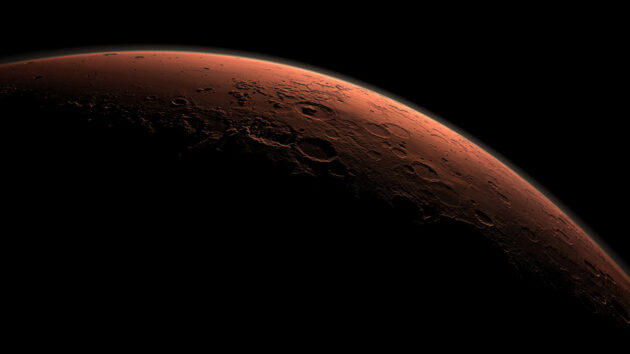
And we still dream of going there. Elon Musk is pouring billions into a putative colonisation of Mars. In science fiction, too, Mars still looms large. Kim Stanley Robinson’s SF blockbuster Mars trilogy deals with the terraformation of Mars into a place suitable for human habitation. The Martian, by Andy Weir, a (mostly) rigorously scientific Robinson Crusoe adventure, became a hit movie.
Even the old Martian fantasies refuse to die. George R. R. Martin edited an award-winning collection of new stories in the “classic” Mars style, Old Mars. John Carter, based on the Burroughs novels, was a massively expensive box-office flop, but performed respectably on home media release and garnered a not exactly stellar, yet not quite bomb rating of 60% on Rotten Tomatoes.
But the very fact that John Carter was even made shows just how much Mars – old and new – continues to fascinate, enthrall and captivate us, here on the blue planet, looking up at the red one in our night skies.
Please share this article so that others can discover The BFD

